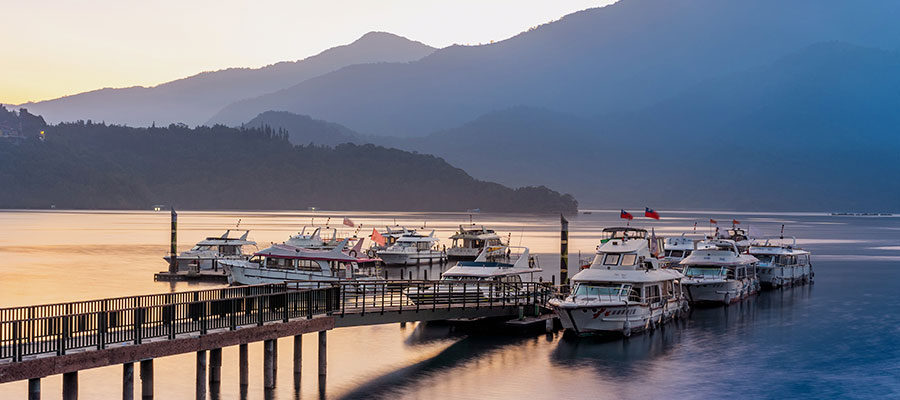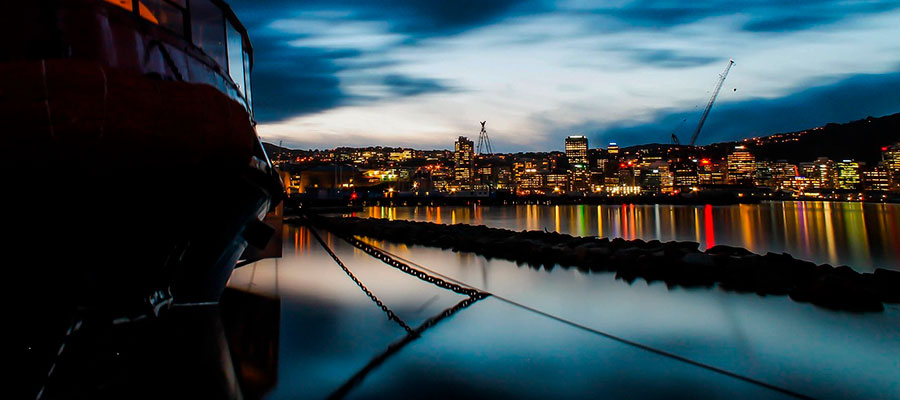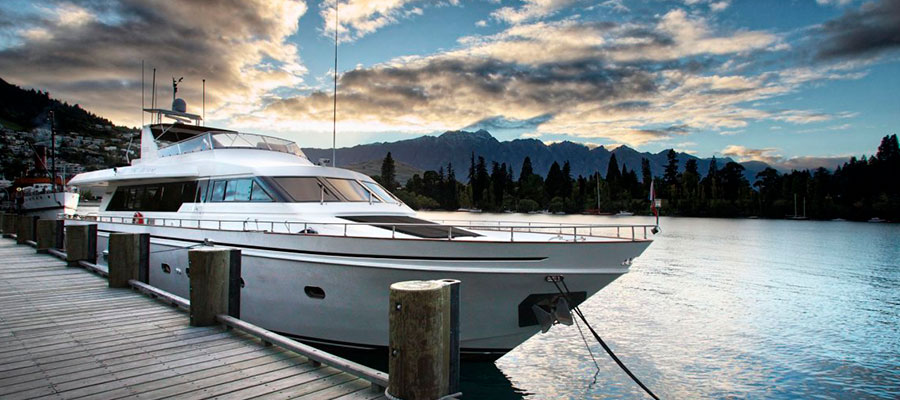
Preparing Your Boat for Night Anchoring
- Check Lighting Equipment: Before setting out, ensure all your lighting equipment is in working order. This includes boat navigation lights, boat deck lights, and especially your anchoring light, which is crucial for making your boat visible to other vessels at night. It’s advisable to carry spare bulbs and batteries.
- Inspect the Anchor and Rode: The boat anchor and rode (the line or chain connecting the anchor to your boat) are your lifelines while anchored. Inspect them for any signs of wear or damage. Ensure your anchor is suitable for the type of seabed you expect to encounter (mud, sand, rock, etc.). The rode should be long enough to allow for a proper scope (the ratio of the length of rode to the water depth), generally recommended to be at least 7:1 in calm conditions.
- Safety Gear Check: Safety should never be compromised. Verify that all onboard safety equipment is accessible and in good condition. This includes life jackets, fire extinguishers, a first-aid kit, and a sound signaling device. It’s also a good idea to have a waterproof flashlight and a handheld VHF Marine Radio within easy reach.
- Navigational Tools Ready: Even if you’re familiar with the anchorage, nighttime navigation presents its own challenges. Ensure your GPS and charts are updated, and you have a clear understanding of the area. Depth finders or sonars can help you assess the seabed before dropping anchor.
- Preparing the Crew: Discuss the anchoring plan with your crew. Everyone should know their role during the anchoring process and where the safety equipment is located. If you’re anchoring in a remote area, it’s wise to inform someone ashore of your plans.
- Plan for the Unexpected: Having a contingency plan for unexpected events is crucial. This includes knowing how to quickly retrieve the anchor and leave the anchorage if conditions deteriorate. Practice emergency procedures with your crew, such as man-overboard recovery.
- Setting Up for Comfort: Lastly, think about what you’ll need to ensure comfort through the night. This might include setting up sleeping arrangements, preparing snacks, or laying out warm clothing if the temperature drops. Consider any noise ordinances in the area to ensure you and nearby boaters can enjoy a peaceful night.
By thoroughly preparing your boat and crew for night anchoring, you can turn what might seem daunting into a smooth and enjoyable experience. Always prioritize safety and respect for the environment and fellow boaters to ensure your night at anchor goes as planned.
In addition to the preparations outlined, it is essential to focus on maintaining vigilance throughout the night to ensure safety. Keep a constant watch to monitor the boat’s position and the anchor's hold, especially if weather conditions are unpredictable or you are anchoring in busy waters at night. Utilize an all-round white light to signal your presence to other boats and help prevent collisions. It is also advisable to use the correct anchor design for the seabed you’re dealing with, whether mud, sand, or rocky bottom, to prevent the boat from drifting. If you’re engaging in night fishing or simply enjoying a calm overnight stay, ensure that every person on board understands their role in keeping watch and can operate the anchor windlass to anchor or retrieve quickly if needed. This thorough attention to detail and adherence to boating safety guidelines will make the experience more secure and enjoyable for everyone involved.
Choosing the Right Spot for Night Anchoring

Selecting the perfect anchorage spot for the night is a blend of art and science, demanding consideration of environmental conditions, safety, and regulatory compliance. Here’s how to choose the right spot for a secure and peaceful night at anchor.
- Weather Considerations: Your first step should always be to check the weather forecast. Look for a location that offers protection from prevailing winds and isn't exposed to swells that could make your stay uncomfortable or even dangerous. Avoid areas where sudden weather changes are common.
- Analyzing the Seabed: The seabed composition plays a crucial role in anchor holding. Sand, mud, and clay offer good holding, while rocky, weedy, or coral bottoms can prevent the anchor from setting correctly and holding securely. Use charts and depth finders to identify the seabed type and depth before deciding on your spot.
- Depth and Tide: Ensure the anchorage has sufficient depth at low tide to prevent grounding. Account for the tide changes throughout the night by checking local tide tables. A spot that’s perfect at high tide could leave you stranded at low tide.
- Swing Room: Boats swing around their anchors as the wind and tide change. Choose a location with enough room for your boat to swing without colliding with other anchored boats, the shore, or underwater hazards. Consider the length of your rode and the size of your vessel when determining if there’s enough space.
- Proximity to Navigation Channels: Stay clear of shipping lanes and busy navigation channels. Not only is anchoring there often illegal, but it’s also hazardous. Ensure you’re visible to passing vessels if you're near a channel by using proper lighting.
- Local Regulations and No-Anchoring Zones: Familiarize yourself with local anchoring regulations. Some areas might have restrictions on overnight anchoring, or there might be designated no-anchoring zones to protect underwater habitats.
- Security from Land: While anchoring close to shore may offer protection from winds and waves, consider the security aspect, especially in remote areas. Ensure you’re not infringing on private property and that you’re in a safe location to avoid unwelcome visitors.
- Accessibility: Consider how easily you can leave the anchorage in case of emergency or weather changes. Ensure there’s a clear path for departure even in low visibility conditions.
- Social Considerations: If you’re looking for solitude, you might choose a more secluded spot. However, if safety in numbers or the camaraderie of fellow boaters is more your style, consider anchoring in a popular area.
After carefully selecting your anchorage, it's crucial to perform additional checks and take specific actions to secure your boat effectively for the night. Always deploy a stern anchor if the conditions or location demands more stability to prevent swinging into nearby obstacles. This dual-anchor setup can offer better control of your boat, especially in unpredictable weather or tidal conditions. Furthermore, ensure all lights are functional, including masthead and all-around green lights, to maintain visibility. It's advisable to keep a watch or monitor the boat periodically through the night, especially if bad weather is forecasted or if the area is known for sudden weather shifts.
For boats anchored in more secluded or challenging environments, like narrow coves or areas with rocky bottoms, setting up reference points on land can help you monitor any movement or drifting. Always ensure the anchor rode is free of wear and damage and that it’s secured properly to a cleat with enough slack for tide changes yet tight enough to hold firm. Nighttime boating requires strict adherence to these practices to avoid running aground or drifting. Remember, a boat owner must stay vigilant and ready to adjust the setup, including quickly retrieving the anchor if you need to move due to emergency or to avoid hazards.
Final Checks:
Once you’ve selected a potential spot, do a slow pass with your boat to observe any underwater hazards, assess the swing radius, and double-check the depth. If everything looks good, prepare for a calm night ahead.
Choosing the right spot for night anchoring is critical for ensuring your safety, compliance with local laws, and the enjoyment of your nighttime experience. Take the time to assess all factors thoroughly, and when in doubt, always err on the side of caution.
The Anchoring Process at Night
Anchoring at night, while peaceful, requires extra attention to detail and precision due to the reduced visibility and potential hazards. The following steps will guide you through a safe and effective anchoring process as the sun sets.

Approach with Caution:
As you near your chosen anchoring spot, reduce speed and proceed cautiously. Nighttime reduces your ability to see obstructions or other anchored vessels. Use your navigation lights and consider spotlighting (responsibly) to enhance visibility.
Prepare the Anchor:
Before arriving at the anchoring location, ensure your anchor and rode are ready to be deployed. Remove any tangles and ensure the anchor is securely attached to the rode. If you have a crew, assign someone to manage the anchor deployment and someone else to steer the boat.
Signal Your Intentions:
If there are nearby boats, signal your intention to anchor by sounding one prolonged blast followed by two short blasts on your horn. This alerts others to your actions, reducing the risk of collision.
Dropping the Anchor:
Once in position, lower the anchor from the bow, not the stern, to maintain stability and prevent swamping. Do not throw the anchor, as this can cause the chain to tangle. Let the anchor down slowly, ensuring it reaches the seabed.
Setting the Anchor:
After the anchor touches down, gradually let out more rode while slowly moving the boat backward. This helps the anchor dig into the seabed. The general rule is a 7:1 scope (rode length to depth ratio) for calm conditions, adjusting for tide and wind. Once enough rode is out, gently reverse to set the anchor firmly.
Confirming the Anchor Hold:
To confirm the anchor is set, turn off the engine and observe stationary objects onshore or use GPS to ensure you're not drifting. Feel the anchor line; a vibrating or dragging line indicates the anchor isn’t holding, and you may need to reset.
Lighting and Safety:
Once anchored, turn on your anchor light—this is a legal requirement to signal your anchored status to other vessels. Check all around for navigational hazards or changes in the weather.
Night Watch:
Designate someone to keep watch, even if everyone plans to stay awake. This ensures someone is always monitoring for signs of dragging anchor or approaching vessels.
Adjusting for Changes:
Be prepared to adjust your anchoring setup if the wind or current changes significantly. This might involve letting out more rode or re-anchoring in a better-protected area.
Preparing for Rest:
Before settling in for the night, ensure everything on deck is secured, and loose items are stowed away. Double-check that all equipment, such as dinghies or water toys, are tied up and won’t drift away.
When anchoring your boat at night, it is imperative to follow a strict set of guidelines to ensure both safety and compliance with maritime laws. Utilize a proper anchor for the seabed you're dealing with, and always back down on the anchor to test its hold before settling in for the night. Position your boat so that the stern light is visible and ensure that all navigation lights are functional to prevent collisions. Small boats, especially those under 30 feet, must take extra precautions due to their limited size and the potential for quicker movements in response to wind and currents.
The boat should be anchored in calm water to ensure everyone aboard can sleep soundly without the worry of rough waves. Constant monitoring of the boat’s position is crucial; use landmarks or GPS technology to detect any significant movement. In the event of any unexpected movement, be prepared to anchor quickly and securely. Always communicate your anchoring plans to the coast guard or local marina, especially if you plan on overnighting. Remember, proper seamanship doesn’t just protect your boat and crew—it also respects the rights and safety of others in the surrounding waters. For any doubts or issues, especially those concerning safety protocols or equipment, visiting boating forums or consulting with experienced skippers can provide valuable insights and solutions.
Emergency Preparedness:
Have a plan for quickly raising the anchor if an emergency arises. Ensure all crew members know their roles and how to operate the anchor winch manually if necessary.

Anchoring at night doesn't have to be intimidating. With careful preparation, a clear understanding of the process, and vigilance, you can ensure a safe and enjoyable overnight anchorage. Always prioritize safety, and remember, practice makes perfect—the more you anchor at night, the more confident you'll become.
Successfully anchoring at night is a skill that combines preparation, knowledge, and respect for the marine environment. As we conclude our series on night anchoring, let’s summarize the best practices and key takeaways to ensure your nighttime anchoring adventures are both safe and enjoyable.
Comprehensive Preparation:- Check Your Gear: Ensure all anchoring equipment is in good condition and suitable for the expected conditions and seabed.
- Lighting is Key: Verify that all navigation and anchoring lights are functional. Have spare bulbs and batteries on hand.
- Safety First: Double-check that all safety equipment, including life jackets and fire extinguishers, is easily accessible.
- Weather and Protection: Select an anchorage protected from prevailing winds and swells, taking into account the weather forecast.
- Understand the Seabed: Opt for locations with a seabed that provides good anchor holding.
- Respect the Tide: Account for tidal changes to avoid grounding.
- Ensure Adequate Swing Room: Allow enough space for your boat to swing without risk of collision.
- Approach Quietly: Enter the anchorage area slowly, minimizing noise and disturbance to others.
- Secure Anchoring: Deploy your anchor smoothly, ensuring it sets properly. Use an adequate length of boat anchor chain or anchor rope for the depth.
- Continuous Monitoring: Regularly check your position relative to fixed points on land to ensure you haven’t drifted.
- Keep Watch: Assign someone to monitor the anchor and weather conditions throughout the night, or set an anchor alarm if alone.
- Be Mindful of Others: Maintain a quiet environment to respect fellow boaters. Keep music and conversations at a low volume.
- Plan for Emergencies: Have a clear plan for retrieving your anchor and leaving quickly if conditions worsen.
- Leave No Trace: Ensure your anchoring doesn’t damage the seabed, especially in sensitive areas. Use mooring buoys where available.
- Wildlife Awareness: Be mindful of marine life in the area. Keep lights and noise to a minimum to avoid disturbing wildlife.
Anchoring at night opens up a new world of boating experiences, offering unmatched peace and a chance to connect with the natural marine environment. By following these best practices, you ensure not only your safety and enjoyment but also the preservation of the marine habitats and the pleasure of other boaters. Remember, every successful anchoring starts with careful planning and ends with leaving the spot as pristine as you found it. Happy anchoring!
